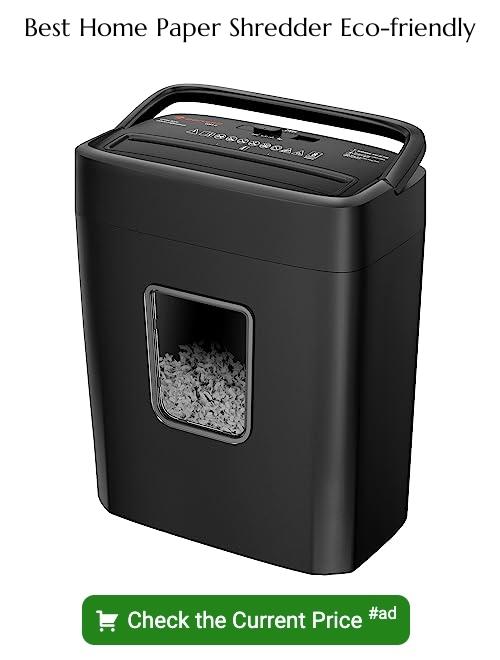Last updated on
Explore eco-friendly and innovative alternatives to shredding paper, protecting your sensitive information while contributing to a greener future.
Are you tired of the endless piles of shredded paper cluttering up your workspace? Are you looking for more eco-friendly and cost-effective ways to dispose of sensitive documents? Look no further! In this article, we’ll explore some creative alternatives to shredding paper that will not only help declutter your space but also benefit the environment. From repurposing old documents to using innovative digital solutions, there are plenty of options available.
So, let’s dive in and discover how you can say goodbye to shredding paper forever!
Recycling Paper
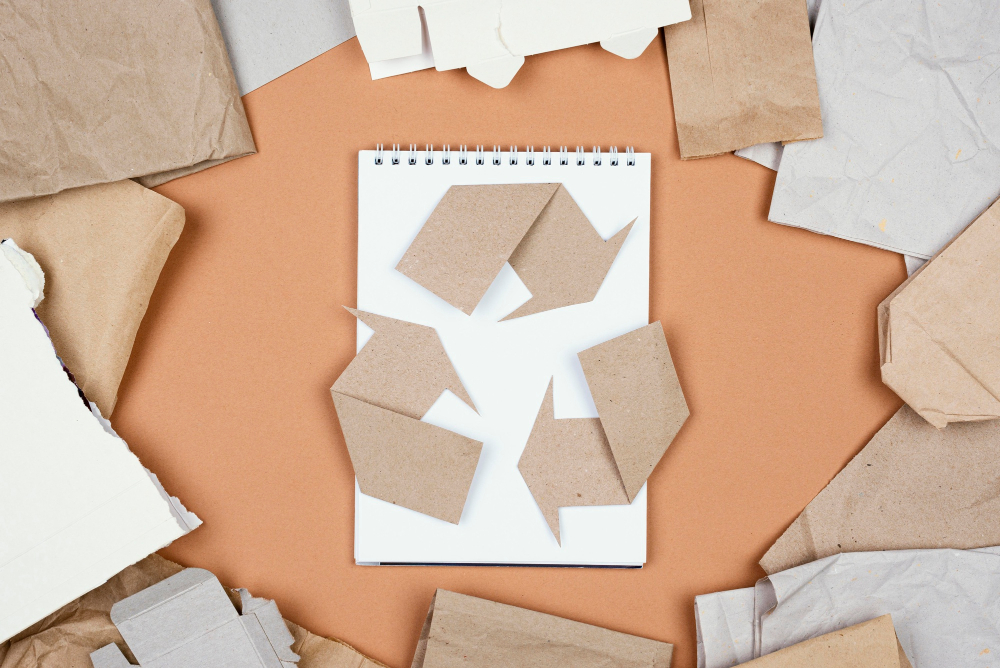
One of the most popular alternatives to shredding paper is recycling. Recycling paper not only helps reduce waste but also conserves natural resources and energy.
The process involves collecting used paper, breaking it down into pulp, and then transforming it into new products such as tissue papers, cardboard boxes or even newspapers.
To recycle your old documents effectively, you need to sort them by type before placing them in a recycling bin. This ensures that they are processed correctly at the recycling facility.
Most communities have curbside pickup programs for recyclable materials like paper products; however, if your area doesn’t offer this service or you have large amounts of sensitive documents to dispose of securely consider using a certified shredding service that recycles shredded material after destroying confidential information.
Composting Paper Waste
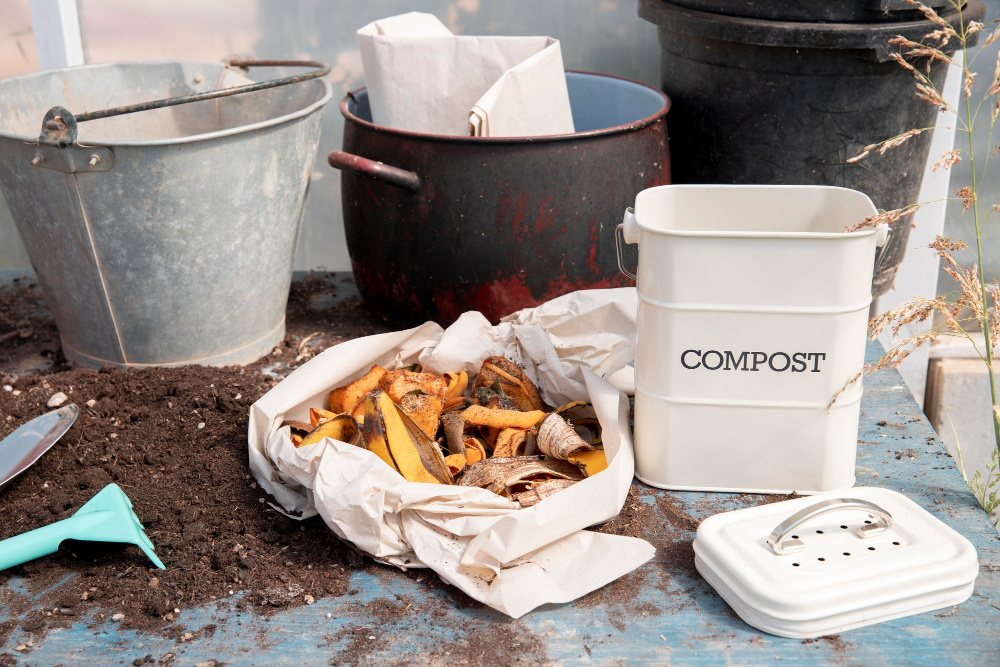
By adding shredded paper to your compost pile, you not only reduce the amount of waste going to landfills but also create a valuable resource for your garden.
To start, shred any non-glossy paper such as newspaper or printer paper into small pieces and add them to your compost bin along with other organic materials like food scraps and yard trimmings. The carbon in the shredded paper helps balance out the nitrogen-rich food scraps, creating an ideal environment for microorganisms that break down the material.
It’s important to note that glossy or coated papers should not be added as they contain chemicals harmful to plants and animals. Also, avoid adding too much shredded office paperwork containing ink from toner cartridges since it may contain toxic substances.
Burning Paper Safely
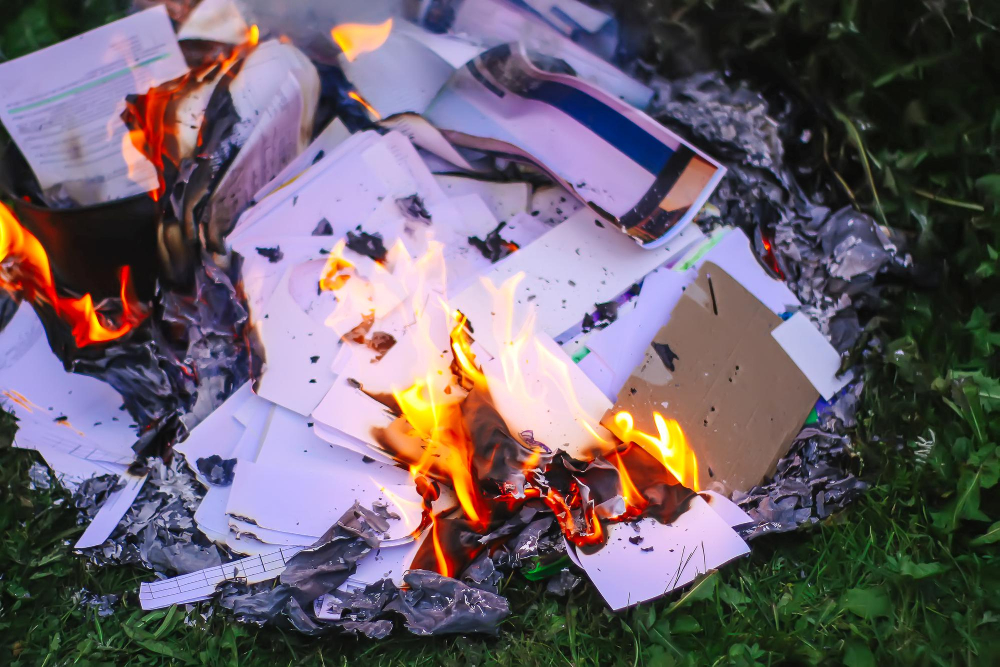
Before burning any paper, make sure you have a designated area for the fire and that it’s far away from any flammable materials. It’s also essential to check with your local authorities if there are any restrictions on open fires in your area.
When burning paper, avoid using accelerants such as gasoline or lighter fluid as they can cause uncontrollable flames and emit harmful fumes. Instead, use natural kindling like dry leaves or twigs to start the fire.
It’s crucial not to leave the fire unattended at any time while burning papers; always keep an eye on it until all ashes have cooled down completely before disposing them off properly.
Reusing Paper Products
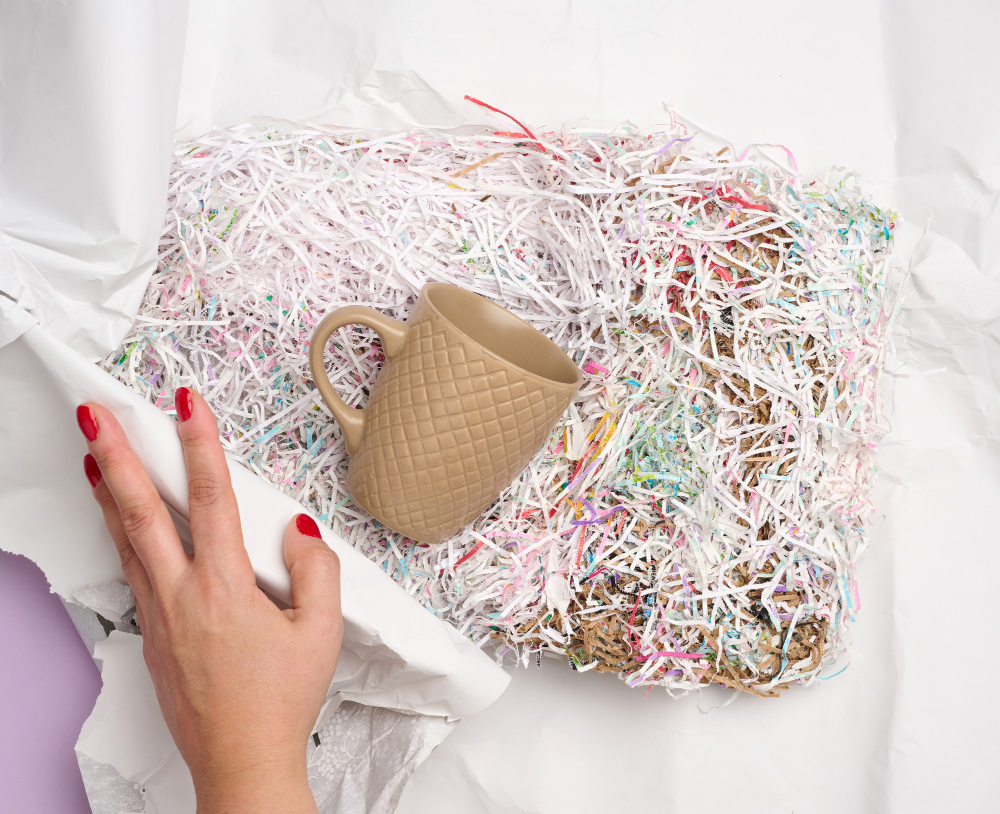
Instead of throwing away old documents, consider using them for other purposes around the house or office. For example, you can use shredded paper as packing material when shipping items or as a filler in gift baskets.
Old newspapers can be used to wrap fragile items before storing them away.
Another great way to reuse paper products is by creating your own notepads from scrap pieces of paper. Simply cut the scraps into uniform sizes and bind them together with glue or staples at one end.
If you have kids, they will love making crafts out of old magazines and newspapers! Cut out pictures and words that interest them, then create collages on poster board or construction paper.
Repurposing Old Newspapers

Instead of throwing them away, consider repurposing them for other uses. One option is to use old newspapers as wrapping paper for gifts or shipping packages.
This not only saves money but also reduces the need for single-use packaging materials.
Another creative way to repurpose old newspapers is by using them as cleaning cloths around your home. Simply cut up the newspaper into small squares and use it to clean windows, mirrors, and other surfaces without leaving streaks behind.
If you’re feeling crafty, try making papier-mâché projects with your old newspapers! You can create unique bowls or vases that add character to any room in your house.
Creating Homemade Paper

All you need is some scrap paper, water, and a few basic supplies like a blender or food processor.
To get started with creating homemade paper:
- Tear up the scrap papers into small pieces.
- Soak the torn-up scraps in warm water overnight.
- Blend the soaked scraps until they form pulp.
- Pour the pulp onto a flat surface covered with plastic wrap or mesh screen (you can use an embroidery hoop as well).
- Press out any excess water using towels or sponges.
- Let dry completely before removing from surface.
Donating Used Books
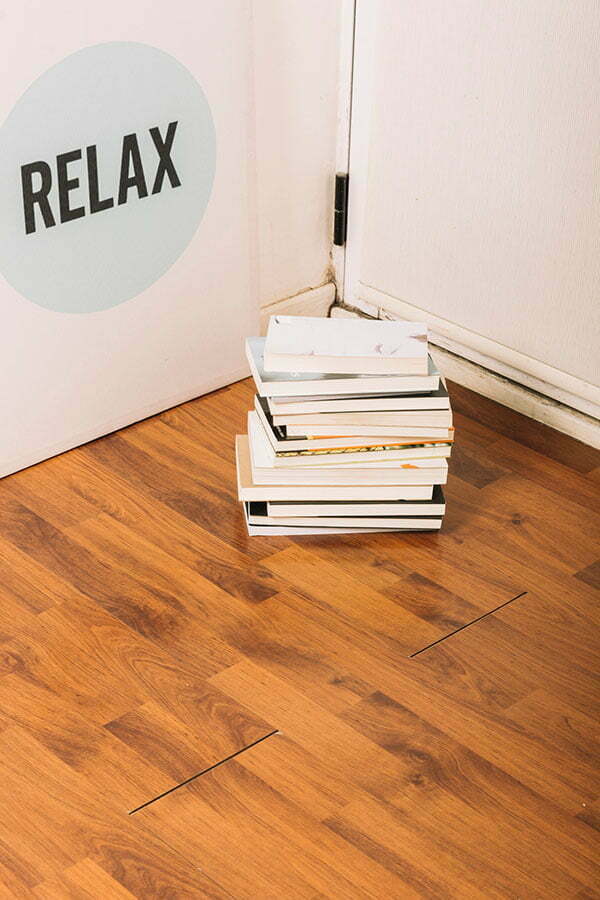
Not only will this help declutter your space, but it will also give someone else the opportunity to enjoy the book. Many libraries and charities accept gently used books as donations and use them for their own collections or sell them in fundraising events.
By donating your used books instead of throwing them away, you are contributing to a more sustainable future by reducing paper waste. Many organizations that accept book donations provide jobs for individuals with disabilities or other barriers to employment.
Before making any donation, make sure that the organization accepts the type of books you want to donate and check if they have any specific guidelines regarding condition or genre preferences.
Crafting With Paper Scraps

From creating beautiful origami flowers to making colorful garlands, the possibilities are endless. You can also use paper scraps for decoupage projects or make your own greeting cards.
One of the easiest ways to get started is by collecting different types of papers such as magazines, newspapers, wrapping paper or even tissue boxes. Cut them into various shapes and sizes and start experimenting! You’ll be surprised at how easy it is to create stunning pieces that will add character and charm to any room in your home.
Not only does this help reduce waste but it’s also a fun activity that you can do alone or with friends/family members.
Eco-friendly Disposal Options

One option is to recycle your paper waste. Recycling not only reduces the amount of waste in landfills but also conserves natural resources and energy used in the production process.
Another alternative is composting your paper waste. Paper products such as coffee filters, napkins, and shredded documents can be added to a compost pile or bin along with other organic materials like food scraps and yard trimmings.
If you have a fireplace or fire pit at home, burning small amounts of uncoated paper can be an effective way to dispose of sensitive documents while keeping warm on chilly nights. However, it’s important to follow safety guidelines when burning papers.
Lastly, consider reusing old papers for various purposes around the house before throwing them away altogether. For example; using newspapers as wrapping material instead of bubble wrap or tissue paper; creating origami crafts from scrap pieces; making papier-mâché bowls out of old magazines etcetera.
Pulp Art Projects
Pulp art involves blending used paper into a pulp and then molding it into various shapes or designs. You can create unique pieces of artwork, such as bowls, vases, or even sculptures using this technique.
To make your own pulp art project at home, start by collecting any scrap paper you have lying around the house. This could include old newspapers or magazines that are no longer needed.
Next, tear the paper into small pieces and soak them in water overnight until they become soft enough to blend together easily.
Once your mixture is ready to go – use an immersion blender (or food processor) to blend everything together until it becomes a smooth paste-like consistency.
Now comes the fun part! Mold your blended mixture onto different objects like balloons or molds made from plastic containers; let dry completely before removing from mold/shape. You can paint over these creations with acrylic paints once they’ve dried completely for added flair!
Confidential Data Alternatives
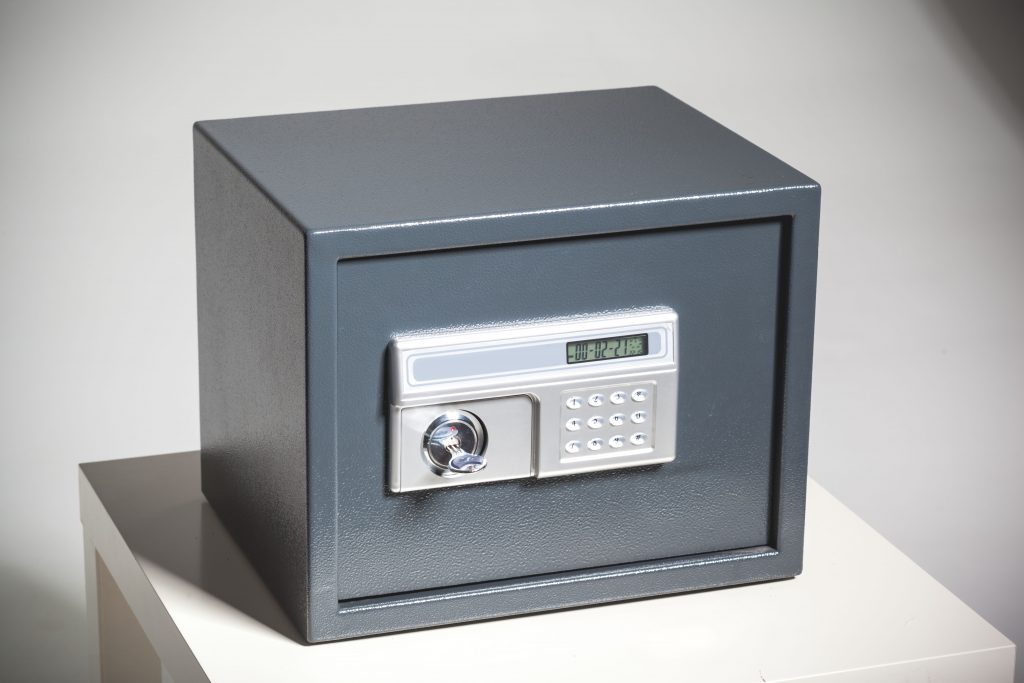
There are other alternatives that can be just as effective and eco-friendly. One option is to use a secure digital document storage service that encrypts your files and ensures they are protected from unauthorized access.
Another alternative is to send confidential information securely through email or cloud-based services with end-to-end encryption. This way, you can ensure that only authorized recipients have access to the data.
If you prefer physical copies of important documents but want an eco-friendlier solution than shredding them after use, consider investing in a fireproof safe or lockbox where you can store them safely until they’re no longer needed.
Digital Document Storage

Not only does it save space and reduce clutter, but it also provides a more secure way to store confidential information. There are many options available for digital document storage, including cloud-based services like Google Drive or Dropbox.
When choosing a service provider for your electronic document storage needs, be sure to research their security measures thoroughly. Look for providers that offer encryption and multi-factor authentication to ensure the safety of your data.
Another benefit of using digital document storage is the ease of access from anywhere with an internet connection. This can be especially useful if you work remotely or need to share documents with others in different locations.
However, it’s important not to rely solely on electronic storage methods as they can still be vulnerable to cyber-attacks or technical malfunctions. It’s always best practice to have multiple backups in different formats such as physical copies stored securely offsite and regular backups saved on external hard drives.
Paper Waste Reduction Tips

Here are some tips to help you minimize your paper usage and reduce waste:
1. Go digital: Switch to electronic billing, online banking, and e-statements.
2. Print only when necessary: Before hitting the print button, ask yourself if you really need a hard copy of the document.
3. Use both sides of the paper: Set your printer to double-sided printing or reuse single-sided sheets for notes or drafts.
4. Opt-out of junk mail: Contact companies that send unwanted catalogs and flyers and request removal from their mailing list.
5. Bring reusable bags when shopping: Avoid using store-provided bags made from trees by bringing your own reusable bag instead.
Paper Brick Making
By compressing shredded paper into dense bricks, you can create a sustainable fuel source for your fireplace or wood stove. To make these bricks, all you need is a simple press that can be easily made at home using basic materials such as plywood and screws.
To start the process of creating your own paper bricks, begin by shredding any unwanted documents or newspapers into small pieces. Then soak the shredded material in water for several hours until it becomes soft and pliable.
Next, use a press to compact the wet pulp tightly together until it forms solid blocks that are ready to dry out in the sun or near a heat source like an oven on low temperature setting.
Once dried completely (usually within 24-48 hours), these compressed blocks of recycled paper will burn slowly with minimal ash residue while providing ample heat output – perfect for those chilly winter nights!
In addition to being eco-friendly and cost-effective, this method also helps declutter your workspace while reducing landfill waste.
Environmentally Conscious Habits

Simple changes such as using reusable bags and water bottles, turning off lights when leaving a room, and recycling plastic containers can make a significant impact on the environment. When it comes to paper waste reduction specifically, consider opting for digital receipts instead of printed ones or printing double-sided whenever possible.
By making small adjustments in our daily routines and being mindful of our consumption habits, we can all contribute towards creating a more sustainable future for generations to come.
Using a Shredding Service

These services are particularly useful for businesses that handle confidential information regularly. Shredding companies offer secure and certified paper shredding services, ensuring that your sensitive data remains safe throughout the process.
When using a shredding service, you can choose between on-site or off-site document destruction options. On-site destruction means that the company will come to your location with their mobile shred truck and destroy the documents right in front of you while off-site destruction involves taking away your documents to be shredded at their facility.
While using a professional shredder may seem like an expensive option, it’s important to consider all factors when making this decision. The cost associated with purchasing and maintaining equipment can add up quickly over time; not forgetting about employee wages if they were tasked with handling document disposal internally.
Community Shred Events

These events are usually organized by local authorities or businesses and offer free shredding services for residents. Not only do they provide a safe and secure way to get rid of confidential information, but they also help prevent identity theft.
Attending these events is easy – simply gather your documents, drive up with them in your car, and watch as professionals shred them on-site. You can even witness the process if you wish! It’s an excellent opportunity to meet other members of your community who share similar concerns about privacy protection.
These events typically occur once or twice per year in most communities; however, it’s essential always to check with local organizers for dates and times since schedules may vary depending on location.
Community Shred Events offer an eco-friendly solution that ensures proper disposal of sensitive information while promoting environmental sustainability within our communities.
Secure and Certified Paper Shredding Service
These services use industrial-grade shredders that can destroy large volumes of paper quickly and efficiently. They also ensure that your confidential information remains safe by providing a certificate of destruction after the process is complete.
Using a professional shredding service not only guarantees the safety of your personal information but also contributes to environmental sustainability. Most reputable companies recycle shredded paper, reducing waste in landfills.
Before choosing a company, make sure they are certified by organizations such as NAID (National Association for Information Destruction) or AAA (Accredited Service Provider Certification). This ensures that they follow strict security protocols during the entire process.
Sending Sensitive Information Securely
It’s important to ensure that the information you’re sending is secure and protected from prying eyes. One way to do this is by using encrypted email services or secure file transfer protocols (SFTP).
These services use advanced encryption algorithms to protect your data while in transit.
Another option for securely transmitting sensitive documents is through a virtual data room (VDR). VDRs are online repositories where users can securely store and share confidential files with authorized parties.
They offer features such as access controls, audit trails, and watermarks that provide an additional layer of security.
When choosing a method for sending sensitive information electronically, it’s essential to consider the level of protection required based on the type of document being transmitted. Always opt for reputable providers who have implemented robust security measures like two-factor authentication or end-to-end encryption.
Monthly Promotions and Security Tips
That’s why it’s important to stay up-to-date with monthly promotions and security tips from trusted sources. Many companies that offer shredding services or digital document storage solutions often have special deals or discounts available each month, so be sure to check their websites regularly.
Staying informed about current security threats can help you protect yourself against identity theft and other forms of fraud. Some simple tips include using strong passwords for all your accounts, avoiding public Wi-Fi networks when accessing sensitive information online, and being cautious about sharing personal details on social media.
By taking advantage of these monthly promotions and following basic security practices in your daily life, you can rest assured that both your finances and personal information are well-protected without breaking the bank!
FAQ
How do you destroy papers without shredding?
To destroy papers without shredding, simply dissolve them in a bucket of water with some baking soda for a couple of hours.
What can I use instead of a paper shredder?
An alternative to a paper shredder is using a screwdriver and bleach, though it might be costly if you don’t already own a screwdriver.
How do you destroy a large amount of paper?
To destroy a large amount of paper, utilize a shredder which is a quick, easy, and cost-effective method commonly available at many retailers for use in offices or premises.
Can you burn paper instead of shredding?
No, burning paper is not a viable option; shredding is safe, responsible, and environmentally friendly as it helps recycle, reduce waste, and decrease carbon emissions.
What are environmentally friendly methods to dispose of confidential documents?
Environmentally friendly methods to dispose of confidential documents include recycling after shredding, composting, or using document destruction services that prioritize eco-friendly practices.
How can you effectively destroy sensitive information on paper without a shredder?
To effectively destroy sensitive information on paper without a shredder, one can burn the paper documents, ensuring they are reduced to ashes.
Are there professional services available for secure paper disposal other than shredding?
Yes, besides shredding, there are professional services available for secure paper disposal, such as incineration and pulping.
Recap
